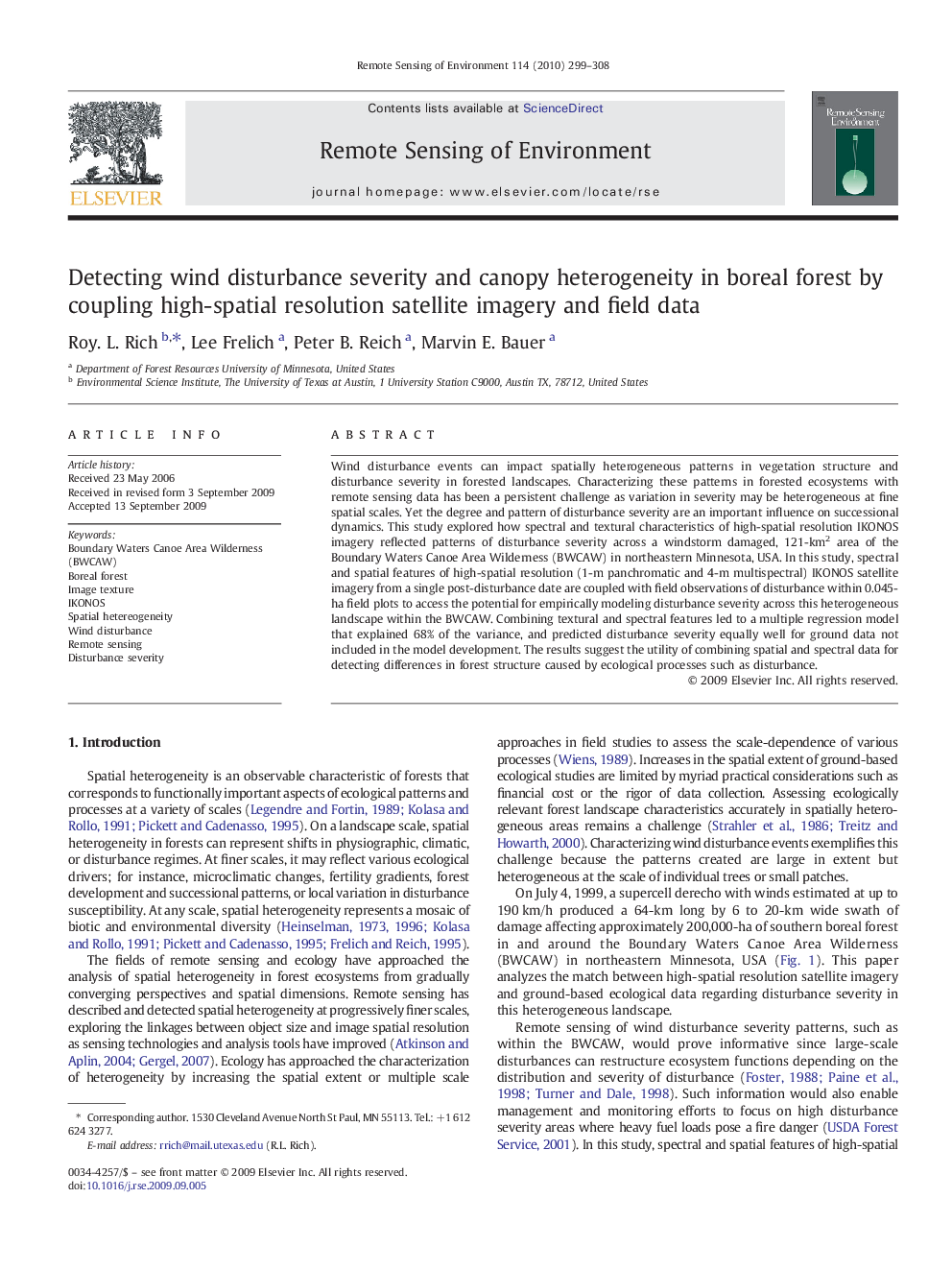| Article ID | Journal | Published Year | Pages | File Type |
|---|---|---|---|---|
| 4459990 | Remote Sensing of Environment | 2010 | 10 Pages |
Wind disturbance events can impact spatially heterogeneous patterns in vegetation structure and disturbance severity in forested landscapes. Characterizing these patterns in forested ecosystems with remote sensing data has been a persistent challenge as variation in severity may be heterogeneous at fine spatial scales. Yet the degree and pattern of disturbance severity are an important influence on successional dynamics. This study explored how spectral and textural characteristics of high-spatial resolution IKONOS imagery reflected patterns of disturbance severity across a windstorm damaged, 121-km2 area of the Boundary Waters Canoe Area Wilderness (BWCAW) in northeastern Minnesota, USA. In this study, spectral and spatial features of high-spatial resolution (1-m panchromatic and 4-m multispectral) IKONOS satellite imagery from a single post-disturbance date are coupled with field observations of disturbance within 0.045-ha field plots to access the potential for empirically modeling disturbance severity across this heterogeneous landscape within the BWCAW. Combining textural and spectral features led to a multiple regression model that explained 68% of the variance, and predicted disturbance severity equally well for ground data not included in the model development. The results suggest the utility of combining spatial and spectral data for detecting differences in forest structure caused by ecological processes such as disturbance.
